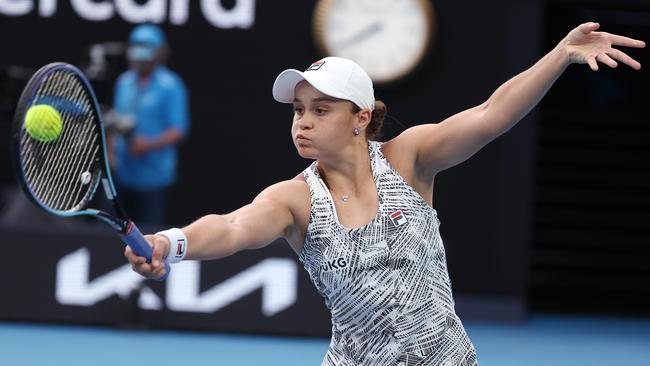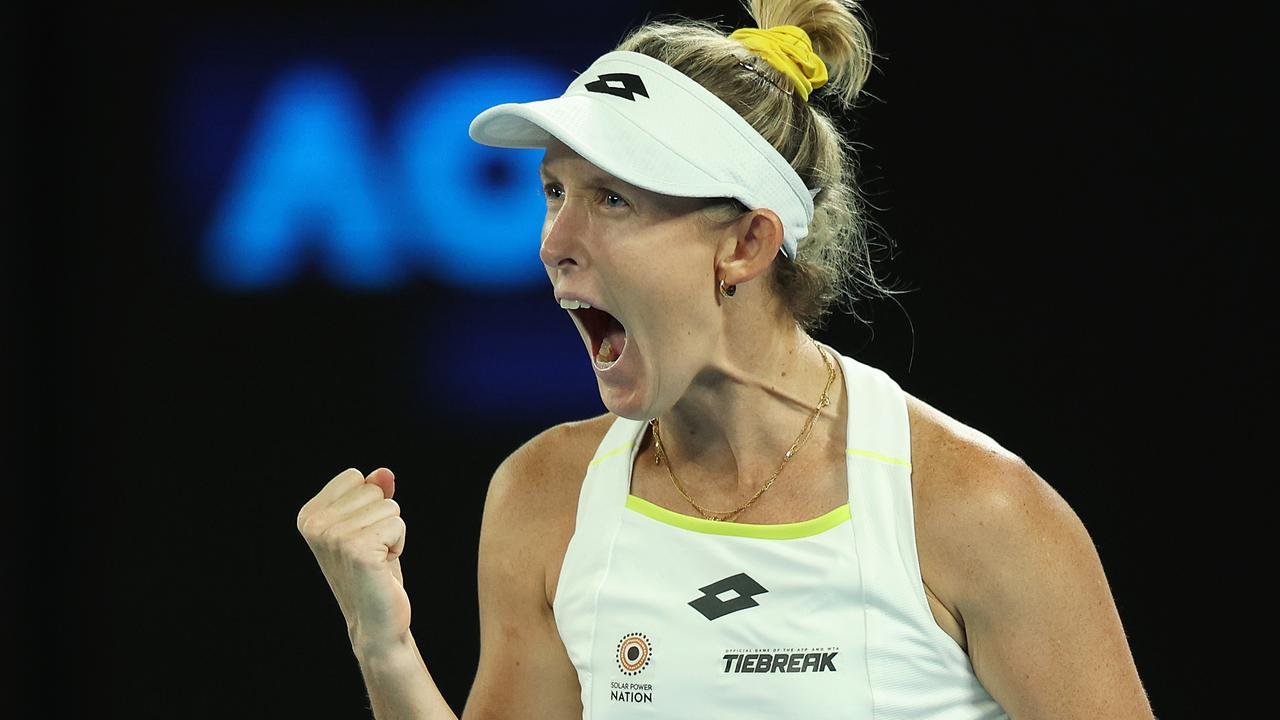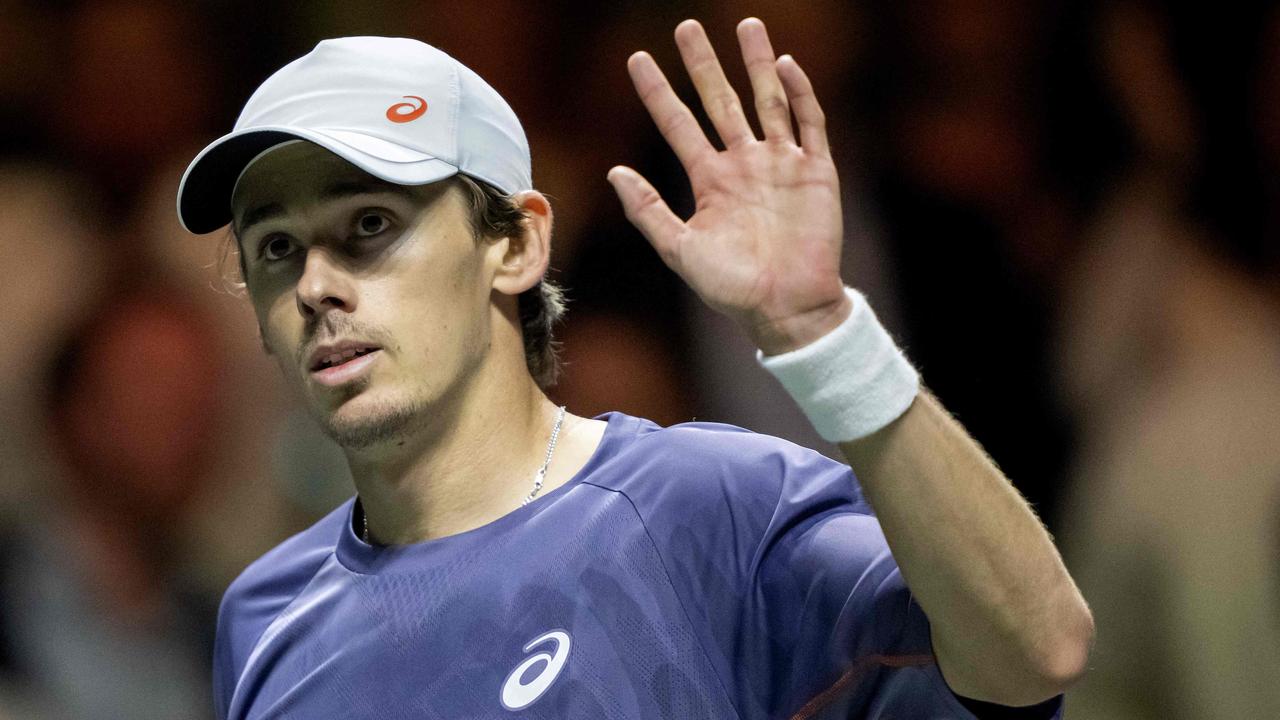The unbearable lightness of Ash Barty’s butterfly effect
Ash Barty is floating through the Australian Open. In any number of ways, from her matches to her press conferences, it’s the butterfly effect.

Ash Barty floats in to Melbourne Park and then floats away again. There’s a gentleness to her remarks and attitude. I’ve seen one photograph of the follow-through to her sliced backhand in which she appears to have grown a pair of wings. In playing style and persona, it’s the butterfly effect.
There’s a gentleness to what she’s doing at the Australian Open. She’s so unfazed by the old millstone of pressure on a World No.1 at a home major that you forget it even exists. Her tennis is beautiful to watch. Only the most natural of athletes can make something rather difficult look this easy.
Yet no butterfly, animal or human, exists to merely look good. Survival’s the thing. You can be blessed with the butterfly effect as an athlete, but you still have to work bloody hard.
Barty plays American Jessica Pegula on Tuesday. Butterfly versus battering ram. Barty comes from a normal Queensland family and a normal background of going off to tennis lessons as a kid, catching her coach’s eye, winning so many junior tournaments she donated the trophies to cash-strapped local clubs and then going all the way to winning Wimbledon.
Meanwhile, Pegula’s family owns the Buffalo Bills. That’s not to downplay the fact she’s busted a gut to get here, too. But they come from different worlds.
Pegula is straight-faced and plays like an offensive lineman. She can block when she has to, but she can make plays of her own. The problem for Pegula is this. How do you catch a butterfly?
It’s not just Barty’s tennis that has a lightness of being. She’s wearing the World No.1 ranking as gently as feathers. She’s laughing off the growing hype like kookaburras chuckle at dawn. She’s playing crucial points as if she’s having another backyard hit near Casey Dellacqua’s barbecue. Her post-match press conferences are stress-free. She’s totally relaxed where others are pent-up and guarded. The butterfly effect is doing a thousand little things right before there’s one huge outcome. I’m half expecting her to come to Melbourne Park’s Interview Room 1 with a six-pack and plate of party pies.
Barty has a sense of humour. She knows we’re looking for a decent quote. A headline that goes beyond, “Barty Wins Again!”
She appears amused by it all. Example? When she’s asked about her red shoes, a pair of ruby slippers fit for Dorothy in The Wizard of Oz, she grins and replies: “Geez, clutching at straws, aren’t you guys? I mean, red shoes go faster, right? That’s the whole thing behind it. The red shoes are cool. Not often am I one to wear bright shoes, but they’re pretty cool this year.”
It’s funny because we’re 100 per cent clutching at straws. She’s too shy to talk about herself too much and yet she’s quite revealing about her opponents. She provides a decent preview of what the daughter of the Buffalo Bills will bring to Rod Laver Arena.
“My job is to try and make her uncomfortable,” Barty says. “Hopefully I can execute that, have some fun with it, make life difficult for her. Jess is able to control the baseline. She’s able to take time away from you, particularly off her backhand.
“She loves these courts. She made the quarters here last year. The last couple of years, her progression and her confidence has absolutely skyrocketed. She’s a great competitor and one of her best attributes is the fact that she can compete point in, point out, and irrelevant of the score, she’s able to turn up time and time again. We just have to compete, go out there, have fun and see how we go.”
It’s good value for the tennis connoisseur. A teaser of how a match will unfold. “Jess’s swings are quite linear,” Barty says. “She gets the racquet behind the ball and swings through the path. The ball comes at you at a different trajectory. Her ability to absorb pace and then add to it when she wants to is exceptional.
“It’s going to be a challenge for me to try and push her off that baseline. Make her uncomfortable and feel like she has to create.
“I know that she’s also going to be doing the exact same thing to me – trying to make me uncomfortable. That’s the chess game that we play. You see who can execute better on the day. That’s about all there is to it.”
Barty gives the impression of treating every point the same. It’s exactly what she tries to do. “It‘s just the next point, over and over,” she says. “You know, I have no regard for the score in the sense of putting any extra value on a certain point just because it’s match point or whatever the scoreline may be. I try and keep it very process-orientated.
“You still have distractions, without a doubt. But I think it’s important to be able to understand those distractions, accept them and move on pretty quickly. Go back to what was working. I’m still a human being. You still look up and you still get involved in the feelings of what is happening in a match. But being able to reset and come back to doing the routines and doing the things that work has kept me in pretty good stead over the last few years.”
The butterfly effect is a reminder that sport and life is simple. Where are you in your career? “I’m right where I am,” she grins. “I don’t have to move at all for the time being. All I have to do is try and bring my best on any given day to try and upset my opponent. Do what I can to try and win a tennis match.
“There’s no focus or concern about the level. We just try to enjoy the journey as we go. Like I say, have fun with it. Enjoy it. Take it for what it is.”
What is it? It is what it is. Jim Courier is a wonderful on-court interviewer, but even he’s clutching at straws after Barty’s fourth-round win. He asks Barty if defeating Amanda Anisimova is an omen because when she beat her at the French Open, she went on to win the title. Barty answers it gently: “We’ll wait and see, hey?” And then she floats away for another day.



